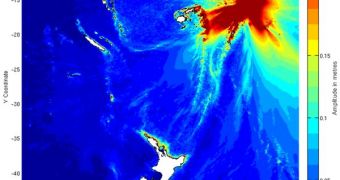According to recent numbers released by the US Geological Survey (USGS), earthquakes killed more than 1,700 people last year. Of these individuals, most perished in southern Sumatra, Indonesia, on September 30, when the powerful tremor that struck the region killed 1,117 people. The United Nations Office for Coordination of Humanitarian Affairs (OCHA) has confirmed these figures and underlined the fact that last year saw a lot less deaths caused by earthquakes than 2008. Two years ago, more than 88,000 perished at the hands of the devastation caused by movements in the Earth's crust.
The thousands that perished in 2008 died following the May 12 Sichuan tremor, a devastating, 7.9 -magnitude earthquake that occurred in China. For 2009, the largest tremor was the 8.1-magnitude one that struck the Samoa Islands on September 29, just one day before the one in Indonesia. The immense amount of energy released by the tectonic plates generated tsunamis that struck American Samoa, Samoa and Tonga, killing about 192 people. The Italian medieval city of L’Aquila was also hit by a powerful tremor on April 6, which killed 295 people.
The USGS also reveals that 15 countries on four continents lost people in earthquakes throughout 2009, and that 11 additional nations saw some of their citizens being injured in such a natural disaster. The American agency estimates that millions of tremors occur each year, but that most of them are too small in magnitude to pose any danger, or they occur in remote regions, where they are not detected, and do not affect anyone. The USGS National Earthquake Information Center (NEIC) published lists of earthquakes every day. About 40 such events are recorded per day, for a total of around 14,500 per year.
To monitor earthquakes worldwide, the USGS NEIC receives data in real time from nearly 990 stations in 85 countries, including the 150-station Global Seismographic Network, which is jointly supported by USGS and the National Science Foundation (NSF), and operated by USGS in partnership with the Incorporated Research Institutions for Seismology (IRIS) consortium of universities. In the US, earthquakes pose a significant risk to 75 million people in 40 states. The USGS and its partners in the multi-agency National Earthquake Hazard Reduction Program are working to improve earthquake monitoring and reporting capabilities via the USGS Advanced National Seismic System (ANSS).
A complete list of the 2009 earthquake statistics can be found on the Earthquake Information for 2009 Web site.

 14 DAY TRIAL //
14 DAY TRIAL //